While variegated plants often split opinion, there are a lot of lovely options out there for the garden.
Åsa Gregers-Warg, head gardener at Beth Chatto Gardens finds certain variegated plants indispensable. "I can't imagine gardening without variegated ornamental grasses, such as Hakonechloa macra ‘Aureola’, Miscanthus ‘Morning Light’, Miscanthus ‘Cosmopolitan’, Molinia caerulea ‘Variegata’, Molinia caerulea subsp. arundinacea ‘Mostenveld’ and Calamagrostis x acutiflora ‘Overdam’.
She adds: "Cornus controversa ‘Variegata’ and Cornus alternifolia make fantastic focal points in a border, as does the moisture loving Iris pseudacorus ‘Variegata’, which brightens up our ponds in early spring, before neighbouring marginal plants have begun to emerge. In dappled shade Hosta ‘June’ makes a lovely companion to golden hakone grass and ferns, while Yucca filamentosa provides year-round interest and structure in a dry, sunny spot.
Below experts including John Hoyland, Keith Wiley, Andy McIndoe, Jimi Blake, Matthew Pottage, Mat Reese and Richard Wilford pick the variegated plants they love the most.
Here's what makes plants variegated
The top variegated plants to grow
Geranium phaeum ‘Lisa’

This geranium was introduced by Coen Jansen, whose nursery in the Netherlands is not to be missed. I grow it for its foliage, which has beautiful, mottled, yellow and green variegation with black dots. I use it to brighten up shady spots from spring through into winter. It flowers from April well into June with silvery-purple, reflexed petals. If you cut it down to ground level once flowering has finished it will produce another flush of healthy leaves, which looks great when most other plants are dying back down in autumn. It is easily propagated by division. Height 70cm. Origin Garden (species Europe). Conditions Fertile, well-drained soil; dappled shade. Hardiness RHS H7. Season of interest Foliage from spring to winter. Flowers April – June. Jimi Blake
Pittosporum tenuifolium ‘Oliver Twist’

One of the best cultivars for small foliage, ‘Oliver Twist’ has a delicate, yellow variegation to the leaf that is less obvious in the fresh new growth. The slender, black stems are easy to clip. Requires fertile soil and three clips each summer to maintain a tight appearance. 4m x 2.5m. RHS H4. Matthew Pottage
Pinus parviflora ‘Fukai’
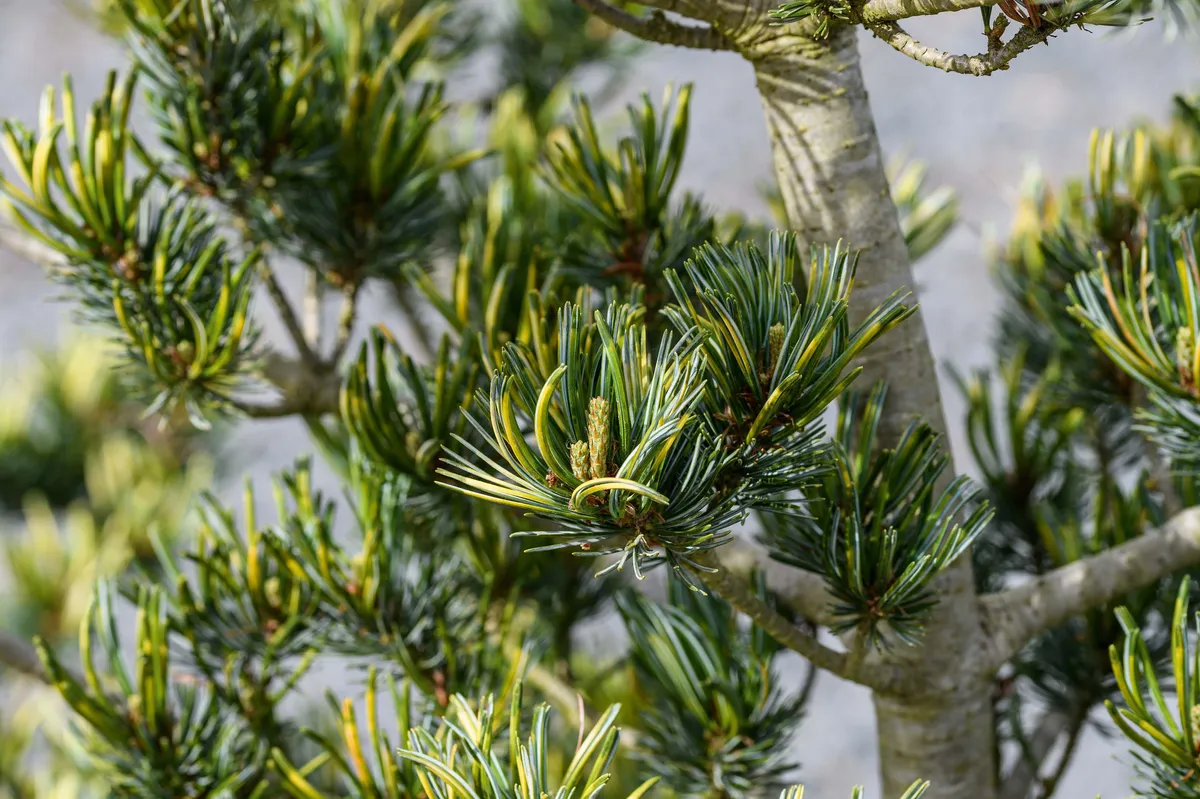
A personal favourite, with variegated needles and colourful pollen cones, set off by smooth, silvery grey bark. The growth habit resembles a giant bonsai, and at Wisley it always stops people in their tracks so they can take a closer look. 1-1.5m. Matthew Pottage
Abutilon ‘Souvenir de Bonn’
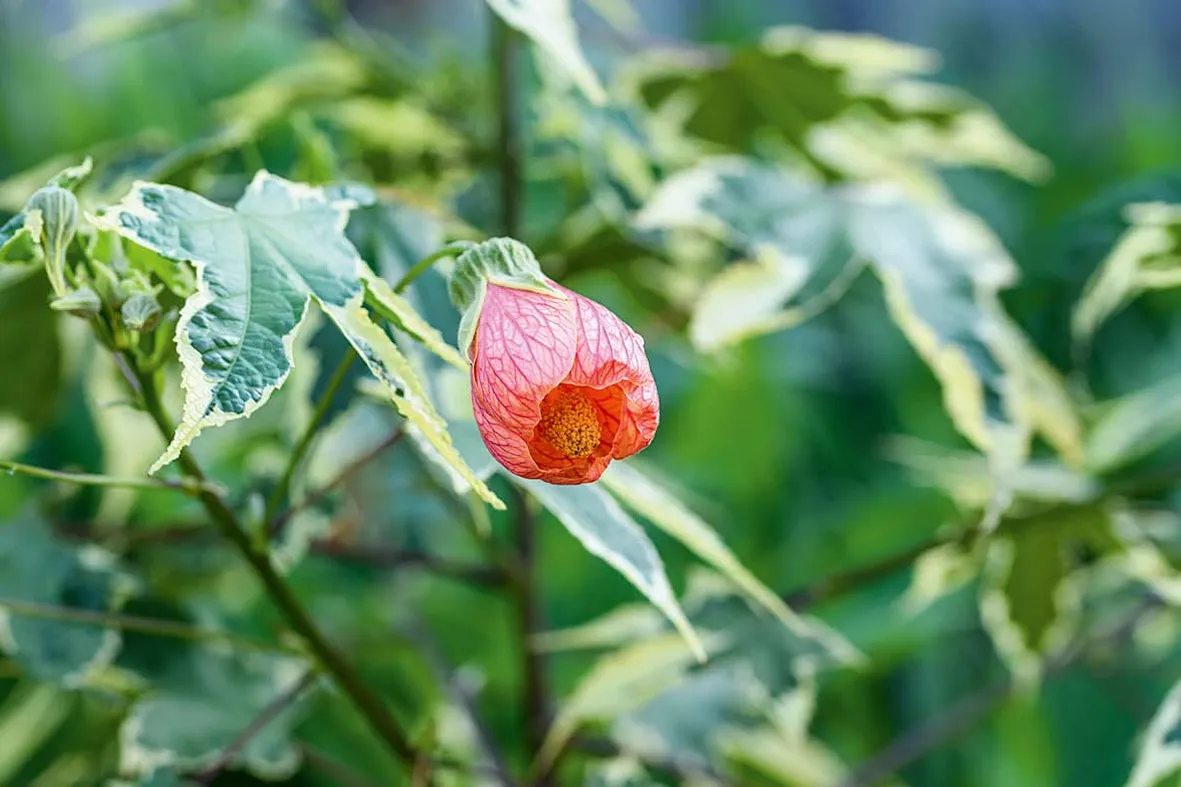
This fast-growing, tender shrub is a wonderful bedding or conservatory plant. It has loud, variegated, maple-like foliage, and bell-shaped flowers in coral-orange on the tips of the new shoots all summer. 2.5m. AGM. RHS H2. Mat Reese
Pittosporum tenuifolium ‘Silver Queen’

Makes a dense shrub or small tree with masses of pretty, variegated, evergreen foliage. It can be clipped into shapes or a hedge. Inconspicuous, purple flowers are produced in the spring, and are sweetly scented. 4m. AGM. RHS H4. Mat Reese
Daphne odora ‘Mae-jima’

This daphne cultivar, selected in Japan, is grown primarily for its striking variegation, although it also flowers prolifically in the early spring with the characteristically fruity scent of all Daphne odora types. With its broad, bright-yellow margin, this is easily the best variegated form of this popular species, and the contrasting dark-green central portion of each leaf supplies the plant with enough chlorophyll to make it grow well. The flowers emerge from rosy-purple buds, an exciting prelude to the promise of the heady scent to come. Height 1m. Origin Garden (species China, Japan, Korea). Conditions Well-drained soil; full sun to part shade. Hardiness RHS H4, USDA 7a-10b. Season of interest All year for foliage, but early spring for flowers. Keith Wiley
Here's the best daphne to grow for colour and scent
Yucca flaccida ‘Golden Sword’

Many yuccas should probably come with some sort of health warning because of the spikes on the end of their stiff leaves. This species (as its name suggests) has soft, rather limp foliage, meaning it can be planted closer to paths without fear of personal injury. It certainly merits more prominent planting as the variegation is very clean, forming a compact, slowly spreading clump. I would grow it for its foliage alone, so the reliably produced, stiff spikes of large, pure-white flowers in midsummer are a very welcome bonus. AGM. Height 1-1.5m. Origin Garden (species southern North America). Conditions Well-drained soil; full sun. Hardiness RHS H4, USDA 4a-9b. Season of interest Year round. Keith Wiley
Fritillaria imperialis ‘Argenteovariegata’
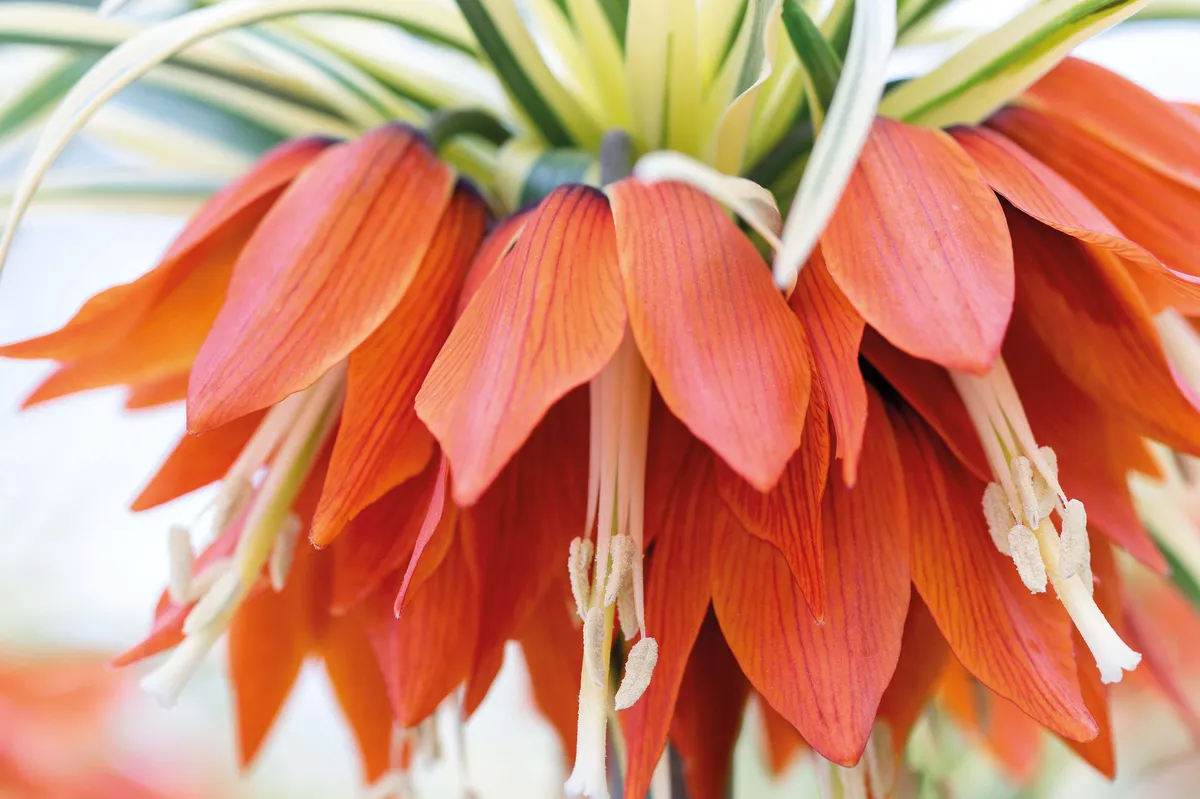
The crown imperial is an impressive spring bulb, with a dense cluster of bell-shaped blooms at the top of a sturdy stem. Among the many different cultivars are a few variegated forms, such as this one, which has pale, creamy margins to the leaves. 90cm. RHS H7, USDA 5a-8b. Richard Wilford
Everything you need to know about fritillaria
Galactites tomentosa
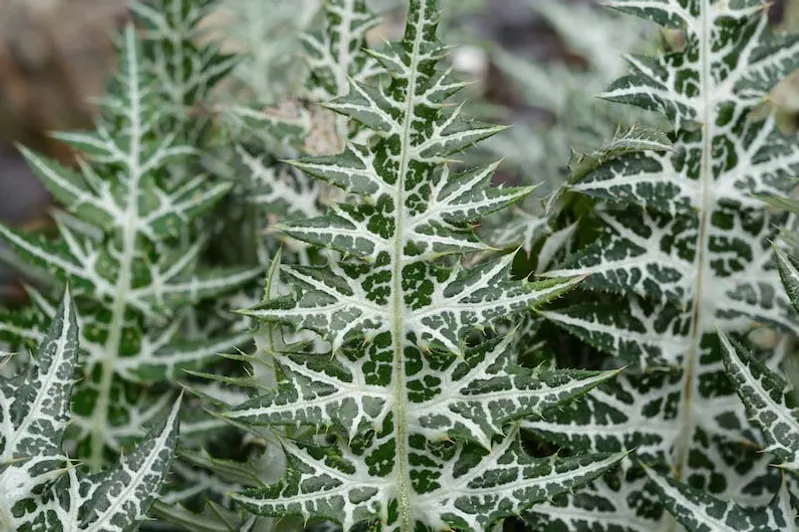
In midsummer, this milk thistle produces scented, purple flowers that are much loved by bees, butterflies and other pollinating insects. But it’s in autumn and winter when you can really appreciate its stunning crisp, white-and-green variegated foliage. It is among the most stunning foliage found in gardens during November. This thistle adores free-draining, sun-rich locations in the garden and, once established, has great drought-tolerant qualities. I find it best to collect the seed and sow them straight away as viability can be erratic. Height 50cm-1m. Origin Mediterranean and southwestern Europe. Conditions Free draining soil; full sun. Hardiness RHS H4, USDA 9a-10b. Season of interest Flowering in summer but excellent crisp foliage in winter.
Daphne odora Rebecca (= ‘Hewreb’)
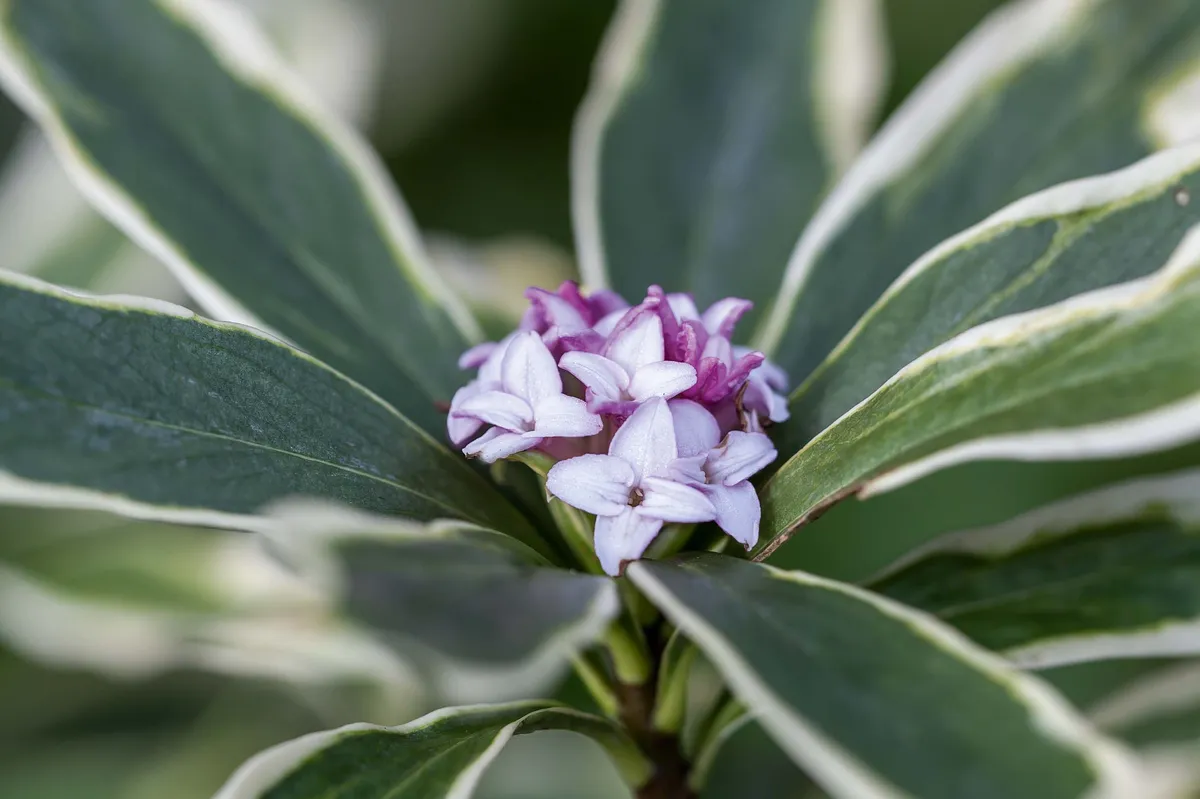
A surprisingly robust form of Daphne odora with green leaves, boldly edged with creamy gold. A showy foliage plant it has the bonus of fragrant winter flowers. A better garden plant than previous cultivars with a similar variegation. 1m. RHS H4, USDA 7a-9b. Andy McIndoe
Here's the best daphne to grow for colour and scent
Plectranthus argentatus ‘Hill House’

A sport of the species that appeared at Hill House nursery about 20 years ago. The cream variegation around the leaf edge is most pronounced on young plants, raised from cuttings. 50cm. RHS H1C, USDA 10a-11. John Hoyland
Agapanthus Silver Moon (= ‘Notfred’)
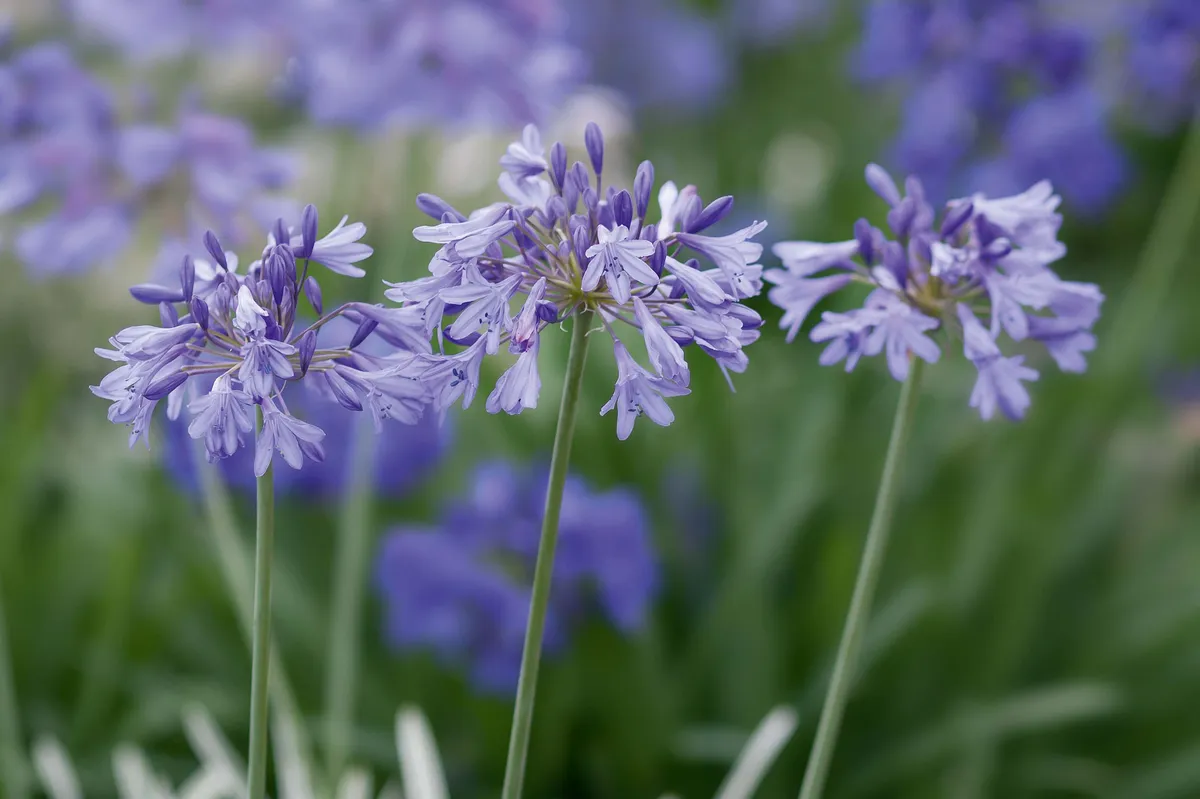
Its silver-edged, slender leaves make a splash in the border throughout the season. A hardy, deciduous cultivar with pale-blue flowers produced freely in mid season. 45cm. RHS H4, USDA 7a-10b. Andy McIndoe
The best agapanthus to grow in your garden
Cornus kousa ‘Wolf Eyes’

Pretty, variegated shrub with pointed, grey-green leaves margined with white; starry, white blooms in early summer. Best grown in semi-shade on moist, well-drained, acid soil. 3m. AGM. RHS H5, USDA 5a-8b. Andy McIndoe
Cornus with attractive foliage and colourful stems
Cornus alternifolia ‘Argentea’

The variegated dogwood is one of the finest foliage shrubs with floating horizontal branches and delicate green and white leaves. Lacy, white flowers in early summer. 3m. AGM. RHS H6, USDA 4a-8b. Andy McIndoe
Here's more flowering dogwoods
Cornus alba ‘Gouchaultii’
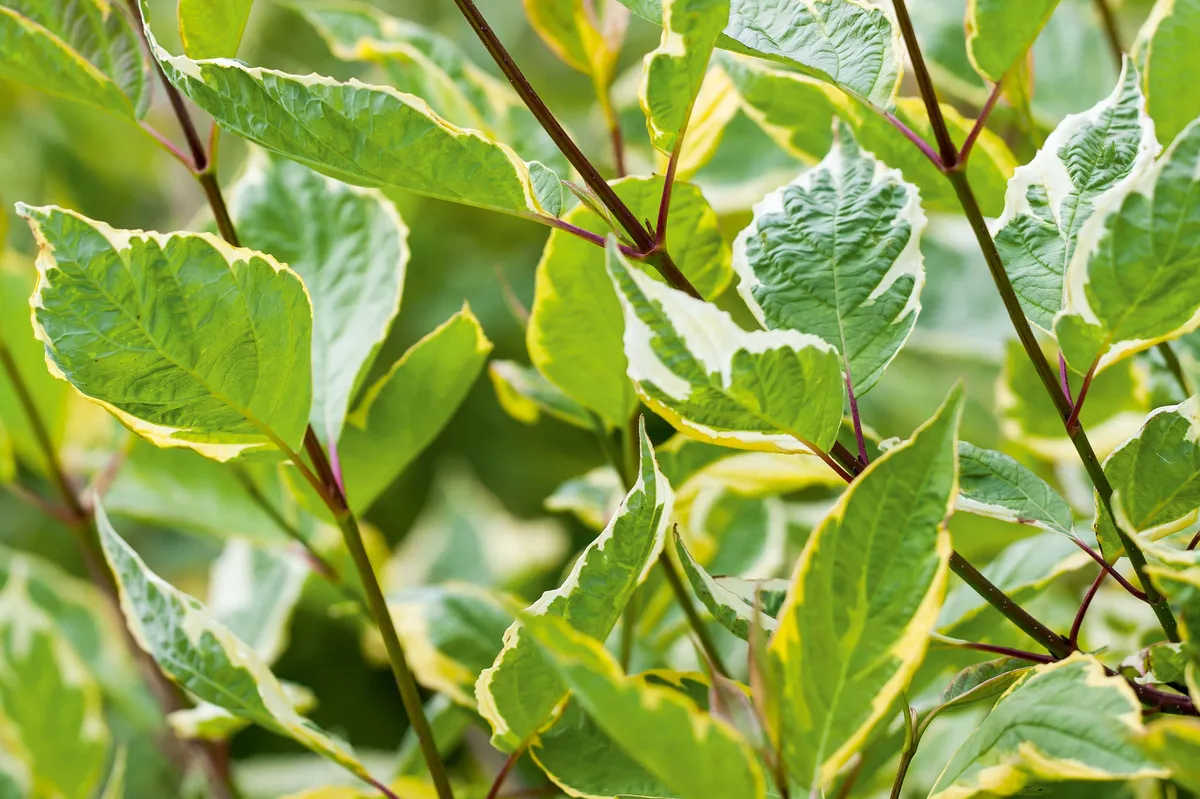
Dark-red stems in winter remain decorative after the ochre and green leaves have fallen. Thrives on any soil; excellent in wet conditions. Cut back hard to 20cm every two years. 1.8m. RHS H7, USDA 3a-7b. Andy McIndoe
Cornus alba ‘Sibirica Variegata’
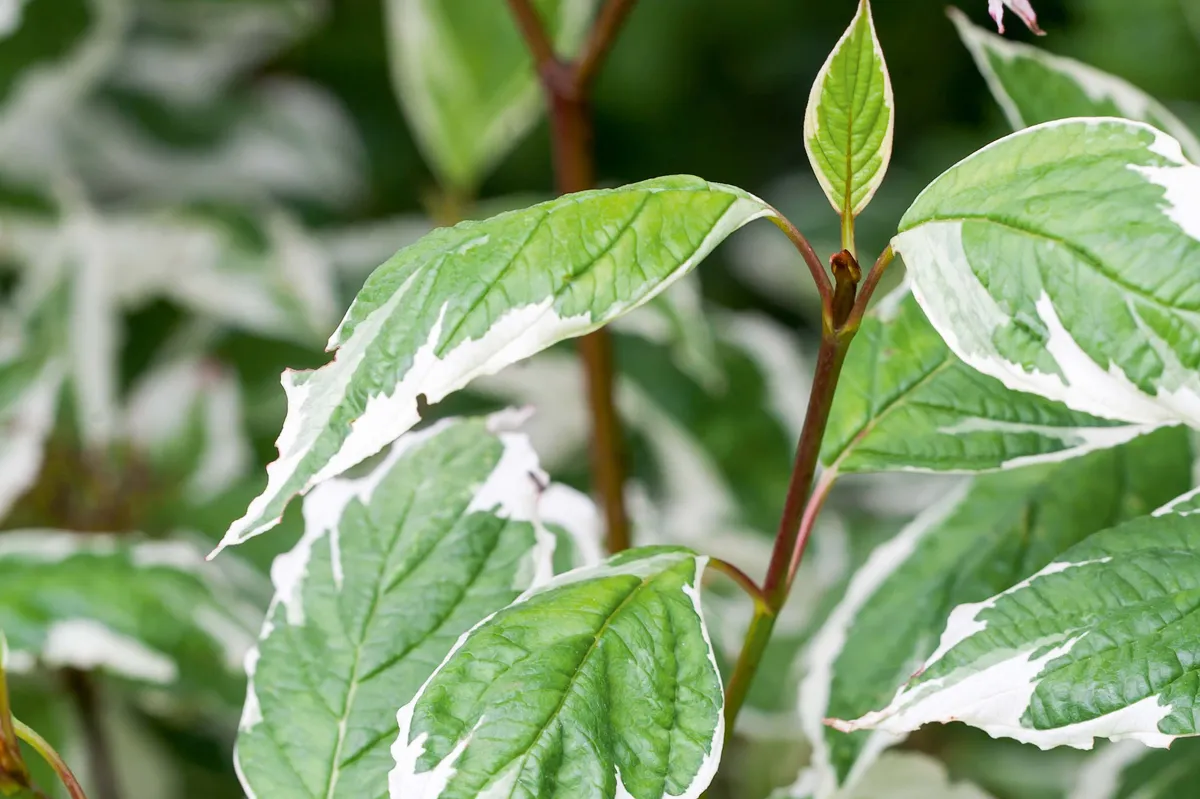
Much less vigorous than other red-barked dogwoods; ideal for smaller gardens. Attractive foliage with the bonus of dark red winter stems. Grows on any soil in sun or shade. 1.2m. AGM. RHS H7, USDA 3a-7b. Andy McIndoe
Cornus mas ‘Variegata’
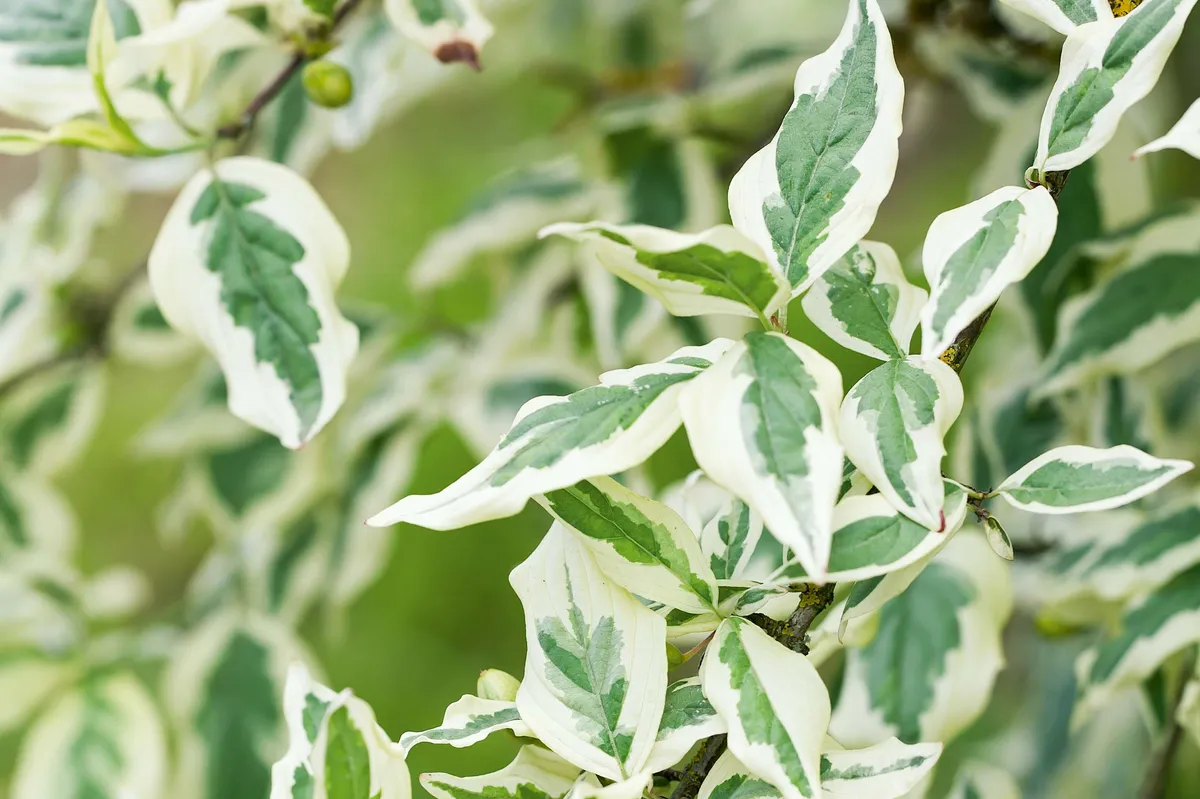
Tiny, golden flowers on bare stems in late winter before the white and green leaves unfurl. Scarlet fruits in autumn. Slow growing and upright in habit when young. 3m. AGM. RHS H5, USDA 5a-8b. Andy McIndoe
Cornus controversa ‘Frans Type’

An excellent form of the variegated wedding cake tree with grey-green leaves with narrow white margins. More vigorous than C. controversa ‘Variegata’ and better in more challenging growing conditions. 5m. RHS H5, USDA 5a-8b. Andy McIndoe